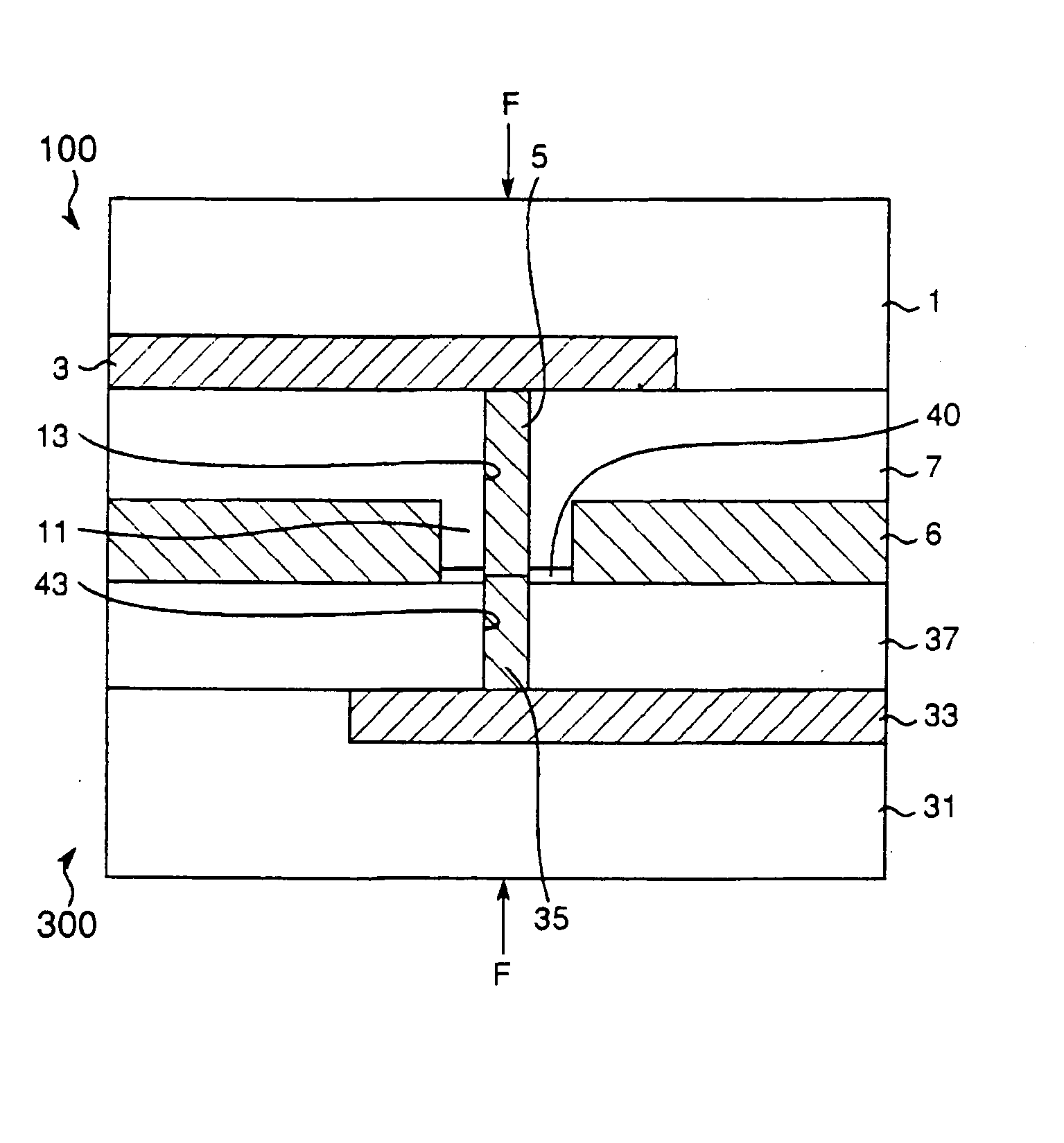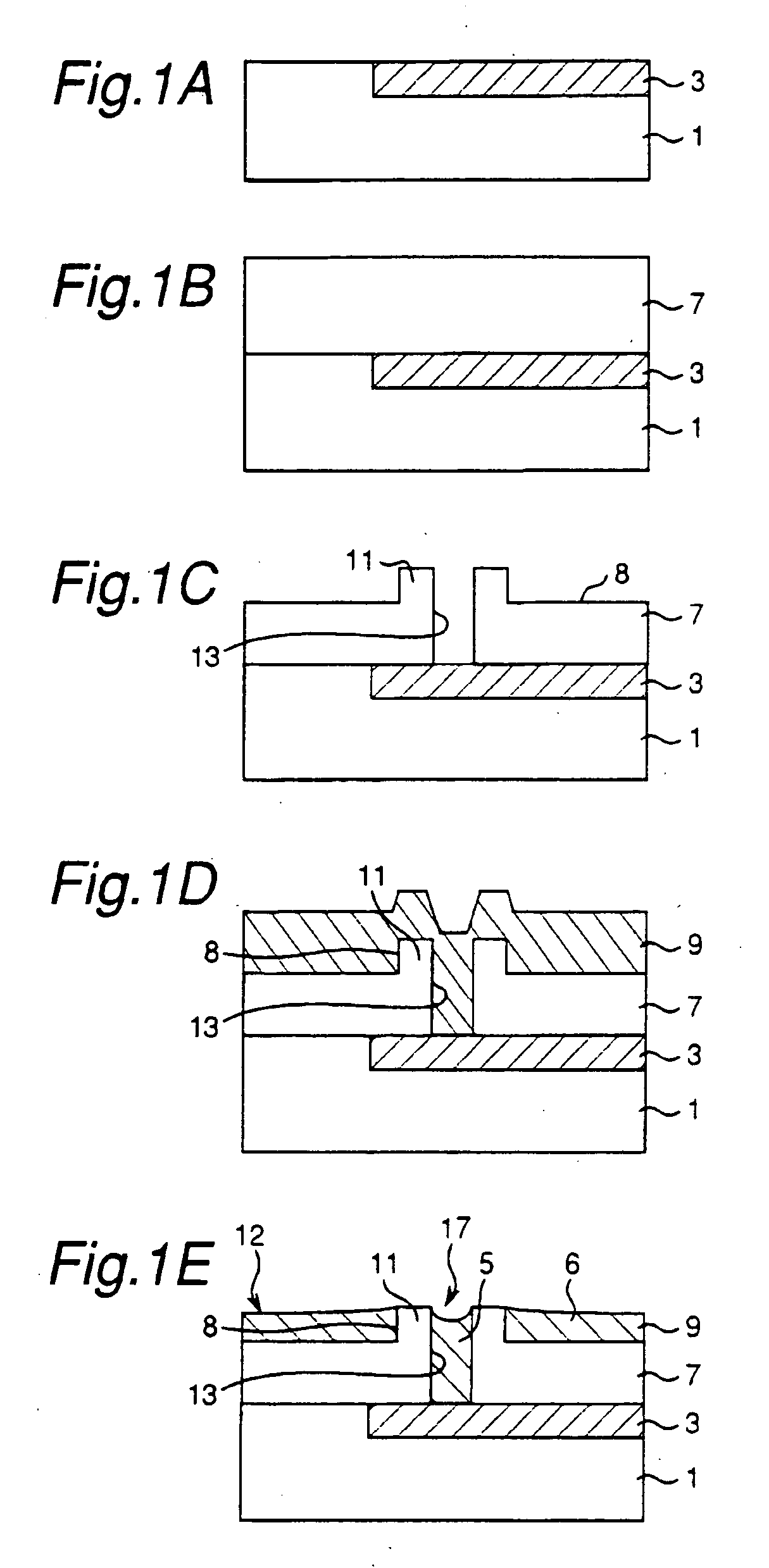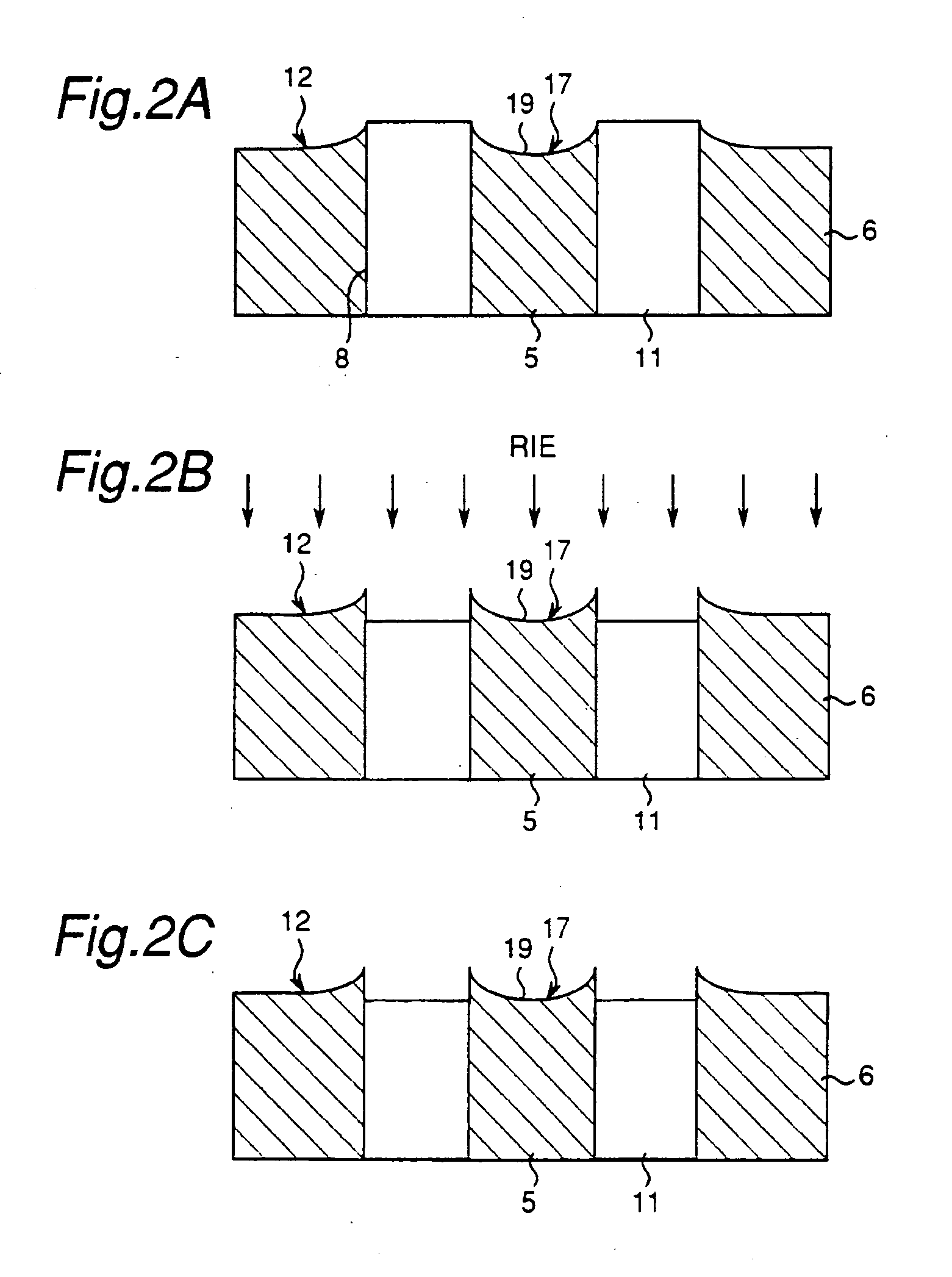Semiconductor device and method for fabricating the device
a technology of semiconductor devices and conductors, which is applied in the direction of semiconductor devices, semiconductor/solid-state device details, electrical apparatus, etc., can solve the problems of inability to directly bond through hole conductors to each other, and the reliability of the electrical connection of through hole conductors, etc., to achieve reliable electrical connection
- Summary
- Abstract
- Description
- Claims
- Application Information
AI Technical Summary
Benefits of technology
Problems solved by technology
Method used
Image
Examples
first embodiment
[0037]FIGS. 1A through 1E, 2A through 2C, 3 and 4 show a semiconductor device fabricating method of the First, as shown in FIG. 1A, a wiring layer 3 is provided as an example of a conductive layer on a semiconductor substrate 1 that serves as an example of a first substrate. Further, as shown in FIG. 1B, an insulating layer 7 is laminated on the semiconductor substrate 1 and the wiring layer 3. The wiring layer 3 is made of a metal of, for example, copper, an aluminum alloy or the like, a polysilicon doped with an impurity, a silicide or the like, while the insulating layer 7 is made of, for example, silicon nitride.
[0038] Next, as shown in FIG. 1C, a through hole 13 that reaches the wiring layer 3 is formed through the insulating layer 7, and a grounding wiring groove 8 is formed on the insulating layer 7 by the techniques of photolithography and dry etching. A portion of the insulating layer 7 that is left between the through hole 13 and the grounding wiring groove 8 becomes a th...
second embodiment
[0057] In the aforementioned first or second embodiment, the insulating regions (through hole insulators and insulating layer) 11, 21 and 37 surround the conductive regions (through hole conductors) 5, 25 and 35 on the bonding surfaces 12, 22 and 42. However, the insulating regions are not required to surround the respective conductive regions, and it is only required to provide the conductive regions and the insulating regions. It is also acceptable that one bonding surface has the conductive region and the insulating region while the other bonding surface has only the conductive region. According to the present invention, the insulating region is etched so that the dishing portion in the conductive region protrudes above the insulating region on the bonding surface polished by the CMP method. Therefore, the present invention can be applicable if at least one bonding surface has the conductive region and the insulating region.
[0058] According to the first or second embodiment, the ...
PUM
 Login to View More
Login to View More Abstract
Description
Claims
Application Information
 Login to View More
Login to View More - R&D
- Intellectual Property
- Life Sciences
- Materials
- Tech Scout
- Unparalleled Data Quality
- Higher Quality Content
- 60% Fewer Hallucinations
Browse by: Latest US Patents, China's latest patents, Technical Efficacy Thesaurus, Application Domain, Technology Topic, Popular Technical Reports.
© 2025 PatSnap. All rights reserved.Legal|Privacy policy|Modern Slavery Act Transparency Statement|Sitemap|About US| Contact US: help@patsnap.com



